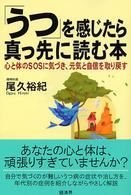Full Description
Việt Nam is the home of more than fifty ethnic minorities--such as the Cham and Thai--many of which have distinctive clothing and weaving traditions linked to antiquity. The tight-fitting tunic called ao dai, widely recognized as a national symbol, has its roots in the country's 2,000-year history of textiles.
Beginning with silk production in the Bronze Age cultures of the Red River, this book covers textiles in Việt Nam--including bark-cloth, kapok and hemp--through the centuries of Chinese rule in the north, a number of independent feudal societies and the brief period of French colonial rule.
Contents
Table of Contents
Preface
A Note on Spelling
A Note on Translation
Adminstrative Map of Việt Nam
Introduction
Technology and Materials
Looms 9; Fibers 11; Dyes
Change, Status and Identity
1. Ancient Clothing
Bark-cloth
Ancient Bronze Age Northern Việt Nam
Ancient Bronze Age Yúnnán
Ancient Bronze Age Guìzhōu
Nán Yuè and Chinese Ruled Việt Nam
Chămpa
2. Feudal
Đại Việt
Chămpa
Mekong Delta Khmer and Chăm
3. Modern Việt Nam
Nguyễn Dynasty
French Colonial Period
Independent Việt Nam
Between pages 100 and 101 are 8 color plates containing 18 photographs
4. Ethnic Minorities in Northern Việt Nam
Kadai Groups
Cờ Lao 103; La Chí 103; La Ha 104; Pu Péo
Tai Groups
Tày 105; Nùng 107; Thái 108; Lào 116; Lự 118; Bố Y and Giáy 119;
Cao Lan
Mon-Khmer Groups
Thổ 121; Mường 121; Khơ Mú 122; Xinh Mun 123; Kháng 123;
Mảng 123; Ơ Đu
Hmong-Mien Groups
Hmông 123; Pà Thẻn 128; Dao
Tibeto-Burman Groups
Hà Nhì 139; Lô Lô 140; La Hủ 142; Phù Lá 142; Si La 144; Cống
5. Ethnic Minorities in Southern Việt Nam
Khmer
Chăm
Central Highlands Malayo-Polynesian Groups
Gia Rai 152; Ê Đê 154; Ra Glai 155; Chu Ru
Central Highlands Mon-Khmer Groups
Tà Ôi and Cơ Tu 156; Bru 159; Ba Na and Rơngao 160; Giẻ Triêng
162; Xơ Đăng 163; Hrê 165; Rơ Măm 167; Brâu 167; Mnông 167; Xtiêng 173; Mạ 175; Cơ Ho 177; Chơ Ro
Chapter Notes
References
Index








